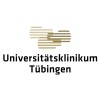
YN001 in Healthy Subjects and Patients With Coronary Atherosclerosis
Atherosclerotic Cardiovascular DiseaseThis study consists of two parts. Part I (phase Ia) is a randomized, double-blind, placebo-controlled, single and multiple ascending dose study in healthy adult subjects. Part II (phase Ib) is a multicenter, randomized, controlled, open label, multiple ascending dose study in patients with coronary atherosclerosis.

A Study of Talquetamab for People With Multiple Myeloma Who Have Received BCMA CAR T-Cell Therapy...
Multiple MyelomaThe researchers are doing this study to find out whether talquetamab is an effective treatment after BCMA CAR Tcell therapy for people with relapsed or refractory multiple myeloma. All participants in this study will have already received the BCMA CAR T-cell therapy ide-cel for their disease.

Elranatamab Post Trial Access Study for Participants With Multiple Myeloma (MM)
Multiple MyelomaThis is a post-trial access (PTA) open-label, single-arm study in Multiple Myeloma participants who continue to derive clinical benefit from elranatamab monotherapy in the Pfizer-sponsored elranatamab Parent Studies.

Can Patients With Chronic Stroke Regain Living Independence by Daily Energizing With Biophoton Generators...
Chronic StrokeStudy objective The purpose of this clinical research is to verify if the patient with chronic stroke can regain the ability of living independently after daily using Testa BioHealing® Biophoton Generators to increase the energy of the brain and other parts of the body. Study design This study is a randomized, triple-blinded, placebo-controlled prospective intervention clinical research. At least 46 patients with chronic stroke will participate in the live-in observational study in a Tesla MedBed Center. Study patient population The adult patient with a chronic stroke which was defined as a stroke occurred at least 6 months ago with a significant disability unable to have an independent life, is to be considered as a qualified participant.

Evaluate Safety and Efficacy of Alveo HP Balloon Dilatation Catheter for Balloon Dilatation of Coronary...
Coronary Artery DiseaseThis is a prospective, multi-center, single-group study aims to evaluate the safety and efficacy of Alveo HP Balloon Dilatation Catheter for balloon dilatation of coronary artery stenosis. Pre-dilation with Alveo balloon dilatation catheter followed by conventional PCI, and follow-up will be carried out. During the trial, the enrollment, treatment and follow-up of the subjects will be recorded, and the safety and efficacy of the investigational device will be evaluated.

A Trial to Learn How Well REGN9933 Works for Preventing Blood Clots After Knee Replacement Surgery...
Venous ThromboembolismThe primary objective of the study is to evaluate the efficacy of REGN9933 for the prevention of venous thromboembolism (VTE) after unilateral total knee arthroplasty (TKA), compared to enoxaparin The secondary objectives of the study are: To evaluate the bleeding risk (ie, major and clinically relevant non-major [CRNM] bleeding) of REGN9933 after unilateral TKA through time of venography, compared to enoxaparin To assess overall safety and tolerability of REGN9933 in participants undergoing TKA To evaluate the efficacy of REGN9933 in prevention of clinically relevant VTE, compared to enoxaparin To evaluate the efficacy of REGN9933 in prevention of deep venous thrombosis (DVT) detected by venography, compared to enoxaparin To evaluate the pharmacokinetics (PK) of REGN9933 after single intravenous (IV) administration To assess pharmacodynamic (PD) effects of REGN9933 on intrinsic and extrinsic coagulation pathways To assess immunogenicity following a single dose of REGN9933 over time To compare the efficacy of enoxaparin and apixaban in prevention of VTE after unilateral TKA

Effect of Combined Lipid-lowering Therapy on Atherosclerotic Plaque Vulnerability in Patients With...
DyslipidemiasThe study is prospective, open-label, randomized, single-center study involving patients admitted on an emergency basis with an acute coronary syndrome (ACS) clinic who underwent PCI of an infarct-related artery (IRA) and had intermediate coronary artery lesions (50-70% stenosis diameter) and elevated LDL-C ( > 1.4 mmol/l) despite statin therapy at the highest dosage. Patients who showed high compliance and did not reach the target LDL-C values 1 month after the development of ACS on the 2nd visit will be randomized into two groups of 60 patients each. Group 1 - taking PCSK9 inhibitors (Alirocumab 150 mg by subcutaneous injection once every 2 weeks or Evolocumab 140 mg by subcutaneous injection once every 2 weeks - open-label prescription of drugs) while taking Atorvastatin at a dose of 80 mg / day. Group 2 - receiving Ezetimibe at a dose of 10 mg in combination with Atorvastatin 80 mg / day.

AS-1763 in Patients With Previously Treated CLL/SLL or Non-Hodgkin Lymphoma
B-cell MalignancyChronic Lymphocytic Leukemia6 moreThis is an open-label, multi-center Phase 1b clinical study of oral AS-1763 in patients with CLL/SLL or B-cell NHL who have failed or are intolerant to ≥2 lines of systemic therapy.

Brain-Oscillation-Synchronized Stimulation to Enhance Motor Recovery in Early Subacute Stroke
Ischemic StrokeAcuteWe will investigate the therapeutic efficacy of EEG-synchronized noninvasive repetitive transcranial magnetic stimulation (rTMS) in the early subacute phase after ischemic stroke to improve upper limb motor rehabilitation. We hypothesize that synchronization of rTMS with the phase of the ongoing sensorimotor oscillation indicating high corticospinal excitability leads to significantly stronger improvement of paretic upper limb motor function than the same rTMS protocol non-synchronized to the ongoing sensorimotor oscillation or sham stimulation.

Coronary Non-slip Balloon Catheter in Patients With Coronary Artery Stenosis(CREST)
Coronary Artery StenosisThis is a prospective, multicenter, randomized controlled clinical investigation aiming to evaluate the safety and effectiveness of non-slip balloon catheter for the treatment of patients with coronary artery stenosis.
